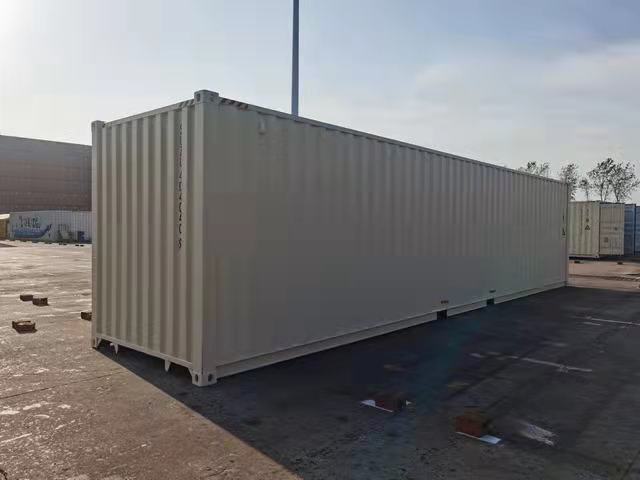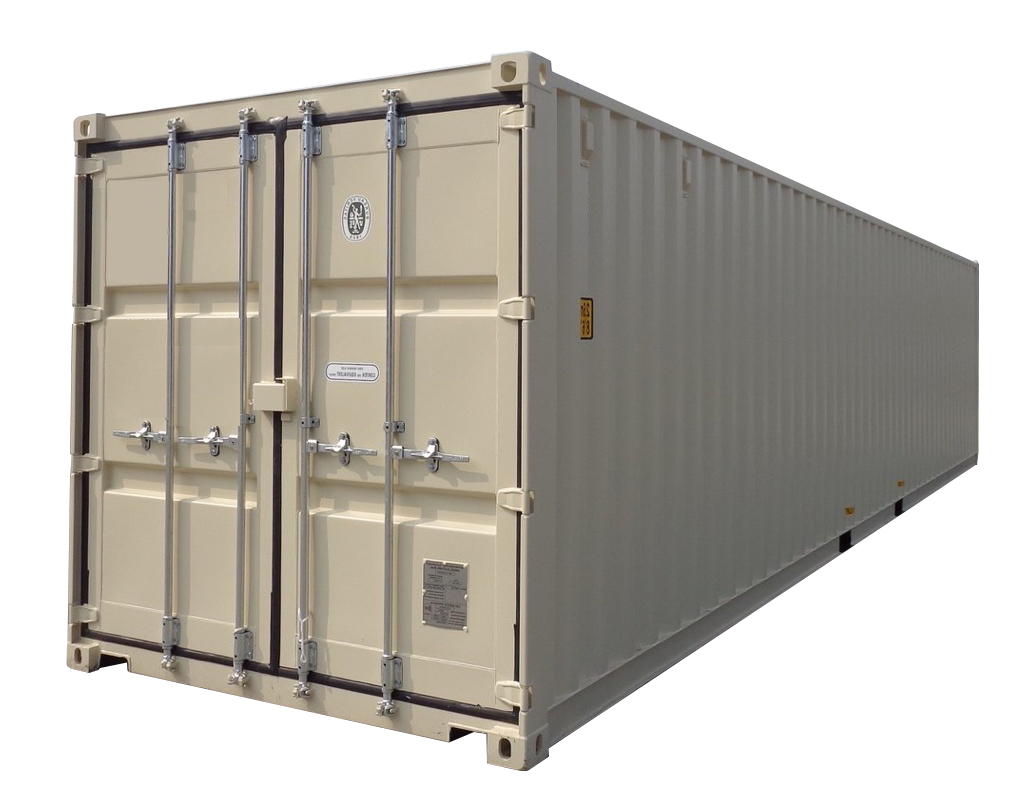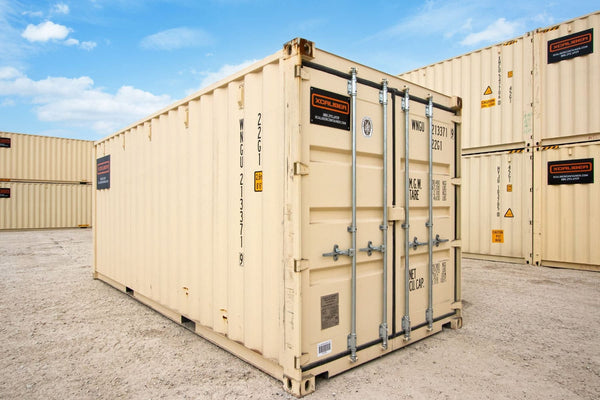10 Reasons to Buy New Shipping Container 40 x 8 x 9.6 for Modern Urban Living
10 Reasons to Buy New Shipping Container 40 x 8 x 9.6 for Modern Urban Living
Blog Article
The Ultimate Guide to Selecting the Right Shipping Container for Your Requirements
When it comes to choosing the best delivery container, understanding your certain needs is necessary. You'll wish to take right into account elements like dimension, kind, and product to assure you make the very best choice. From typical sizes to specialized choices, there's a lot to check out. And also, budgeting for both the container and any kind of modifications can make a huge difference. Let's break down the vital aspects to help you locate the ideal suitable for your needs.
Understanding Shipping Container Sizes
When you're picking a shipping container, recognizing the numerous sizes available is essential for making the ideal choice. Delivering containers generally are available in conventional sizes of 20 and 40 feet, but you'll also locate other dimensions. Understanding the dimension you require relies on what you plan to store or transport.If you're relocating smaller sized products, a 20-foot container could be optimal, while bigger deliveries usually call for a 40-foot container. The height can also vary; high dice containers supply added vertical space, which can be beneficial for taller goods.Before making a decision, determine your cargo, and consider just how much space you'll need for filling and discharging. Always factor in prospective future requirements-- selecting a somewhat bigger container may conserve you hassle down the line. Inevitably, selecting the right dimension will improve efficiency and assure your items are secure throughout transportation
Types of Delivery Containers Available
There are several sorts of delivery containers offered, each designed for certain purposes and freight needs. The standard completely dry container is flexible, perfect for general freight. If you're delivering perishable items, think about a chilled container, which maintains a regulated temperature. For large items, high cube containers offer additional height, fitting taller loads.If you need to carry heavy equipment or equipment, flat rack containers give a tough base without wall surfaces. Open-top containers permit for easy loading of high cargo, with a detachable tarpaulin covering for protection. If you're trying to find flexibility, consider a retractable container that can be easily kept when not in use.Lastly, specialized containers like container containers are made use of for fluids, while vented containers are developed for bulk freight that requires ventilation. Understanding your freight kind will help you select the ideal container to meet your shipping requires successfully.
Product Factors To Consider for Resilience
When picking a delivery container, the product plays a vital role in its sturdiness. You'll intend to consider the advantages of steel versus light weight aluminum, specifically regarding corrosion resistance. Comprehending these elements can assist you make a much more educated selection for your delivery requires.
Steel vs. Light weight aluminum Containers
Just how do you select between steel and light weight aluminum containers for your delivery requires? Beginning by taking into consideration durability. Steel containers are robust and offer superb stamina, making them excellent for heavy lots and rough problems. They resist damage from impacts and are frequently cheaper, which can be a significant variable for budget-conscious buyers.On the various other hand, aluminum containers are lightweight, which can conserve you on delivery costs. They're much easier to navigate and are an excellent option if you need to transfer goods regularly. Nevertheless, aluminum is generally much more expensive and much less robust than steel. Evaluate your specific needs meticulously, including weight, price, and the kind of freight you'll be delivery, to make the ideal choice for your scenario.
Rust Resistance Factors
Choosing the best product doesn't simply include weight and price; rust resistance plays a considerable duty in longevity. When choosing a delivery container, take into consideration the atmosphere it'll face. Steel containers, while solid, can rust otherwise properly dealt with. Search for alternatives with protective finishes or galvanization to enhance their lifespan. Light weight aluminum, on the other hand, uses all-natural corrosion resistance, making it optimal for coastal locations or moist conditions. It can be much more pricey. In addition, analyze the container's usage-- if it'll be subjected to chemicals or severe climate, focus on materials that can withstand these conditions. Purchasing a corrosion-resistant container currently can save you from expensive repair services or substitutes down the line. Choose sensibly for long-lasting advantages.
Alterations and Personalization Options
Shipping containers aren't simply for moving products; they can be changed to meet your specific requirements through various adjustments and customization options. You can convert a basic container right into a relaxing office, a short-lived retail store, or perhaps a personal fitness use this link center. The possibilities are almost endless.Think about adding home windows, insulation, or ventilation to improve comfort. You might additionally consider electrical wiring, plumbing, and even customized shelving to boost capability. If safety's an issue, enhanced locks can supply tranquility of mind.For visual appeal, you can repaint the container or include a distinct design to make it attract attention. Do not ignore floor covering options-- whether you want durable plywood or something more innovative, it can boost the space.Ultimately, tailoring your delivery container to suit your requirements can improve functionality and produce a special atmosphere that shows your style.
Evaluating Your Transportation Requirements
When it concerns using your changed delivery container, comprehending your transportation requires is key. Begin by determining what you'll be delivery-- whether it's hefty tools, retail goods, or personal products. Each kind of cargo has various needs pertaining to size, weight, and accessibility.Next, think about the distance and mode of transport. Are you delivering in your area, across the country, or globally? This impacts the container's style and capability. If you're using trucks, guarantee your container fits common dimensions for simple loading and unloading.Additionally, consider transit problems. Will your products need unique protection from weather condition or temperature level variations? If so, you might require insulation or air flow functions in your container.Lastly, assess how often you'll be transporting goods. Regular shipments might require an extra long lasting and flexible container to meet ongoing needs. By addressing these elements, you'll be well-prepared to select the ideal shipping container for your needs.
Budgeting for Your Delivery Container
Setting a budget plan for your shipping container is essential for making sure a smooth getting process. Determine exactly how much you can manage to spend. Bear in mind that prices can differ considerably based upon dimension, condition, and kind. New containers normally set you back much more, however utilized ones can provide substantial savings.Next, consider any kind of additional costs you could sustain, such as transportation fees, delivery fees, and modifications. If you intend to personalize the container, aspect in those expenses as well. Research study different suppliers to contrast costs and find the finest deal that fulfills your needs.Don' t fail to remember to include any kind of authorizations or regulations that might apply to your purchase and use the container. By clearly detailing your budget, you'll be better prepared to make enlightened decisions, ensuring you get the best container without breaking the bank.
Upkeep and Take Care Of Long life
To guarantee your delivery container lasts for many years, regular upkeep is key. Begin by inspecting the outside for rust, damages, and damage. If you identify any issues, resolve them immediately to protect against additional deterioration. Clean the container occasionally, both throughout, to get rid of dirt, debris, and dampness that can cause corrosion.Ensure the doors seal appropriately and lubricate the hinges to stay clear of rust and sticking. If you're utilizing the container for storage, consider including air flow to lower moisture and mold and mildew growth. For added security, apply a rust-inhibiting paint or sealant annually.If your container's situated in a rough atmosphere, like seaside areas, you could require to enhance upkeep regularity. Watch on the flooring, also; any signs of wear must be fixed as soon as possible. With these simple steps, you'll extend the life of your shipping container substantially.
Regularly Asked Questions
Just how Do I Locate a Reputable Delivery Container Distributor?
To locate a trustworthy delivery container supplier, begin by looking into on-line reviews, requesting for referrals from friends or industry get in touches with, and contrasting costs. Constantly examine their qualifications and warranty they supply top quality containers that satisfy your needs.

Can I Rent a Delivery Container Rather Than Purchasing?
Yes, you can most definitely rent out a Get More Information delivery container rather of purchasing one. Numerous distributors provide rental choices, which can save you cash and give adaptability if you only require it for a brief duration.
What Allows Are Needed for Container Placement?

Are Delivery Containers Weatherproof and Ideal for Outdoor Storage Space?
Yes, delivering containers are generally weatherproof, designed to stand up to rough problems. Their durable construction keeps your products safe and secure and dry, making them suitable for outdoor storage. Simply guarantee proper ventilation to avoid moisture buildup inside.
How Do I Carry a Delivery Container When Bought?

Report this page